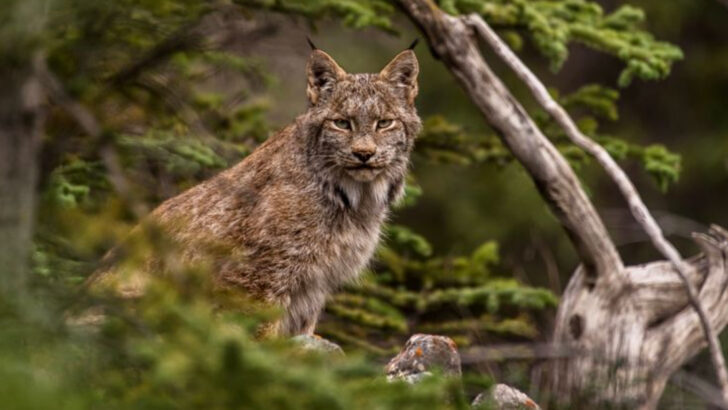A lynx can sneak up on you without making a sound—and take you down with one bite. These cats aren’t loud, flashy, or famous like lions or leopards. They don’t roar. They don’t chase. They stalk. They wait. And then they strike like shadows with teeth. With paws like snowshoes and eyes that pierce the dark, lynxes are built for silent hunts and icy landscapes. Most people never even see one in the wild—and that’s exactly how the lynx likes it. But there’s a lot more to this mysterious cat than meets the eye. Here are 13 facts about the lynx that might just make you look twice next time you’re walking through the woods.
Silent Stealth
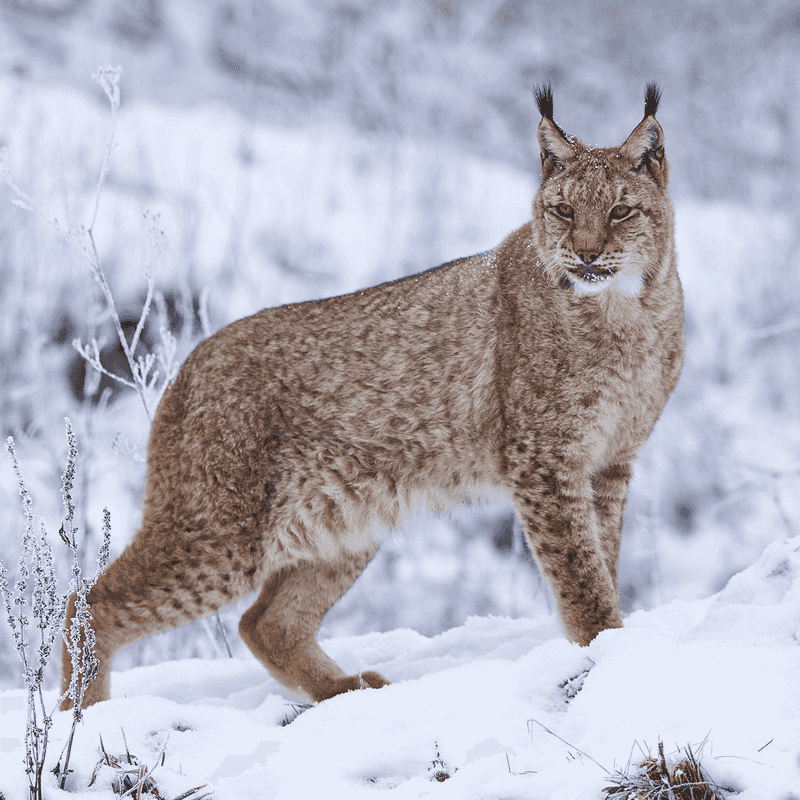
With a grace that seems almost magical, a lynx can move through its forest home without making a sound. Its padded, fluffy paws act as natural snowshoes, distributing its weight to glide over snow. This silent stealth is an evolutionary advantage, allowing it to sneak up on prey unnoticed. Have you ever wondered how such a large cat maintains such quiet? The secret lies in the soft fur covering its paws, muffling each step. This incredible adaptation is more than just practical; it’s a testament to the lynx’s refined hunting skills.
Tufted Ears
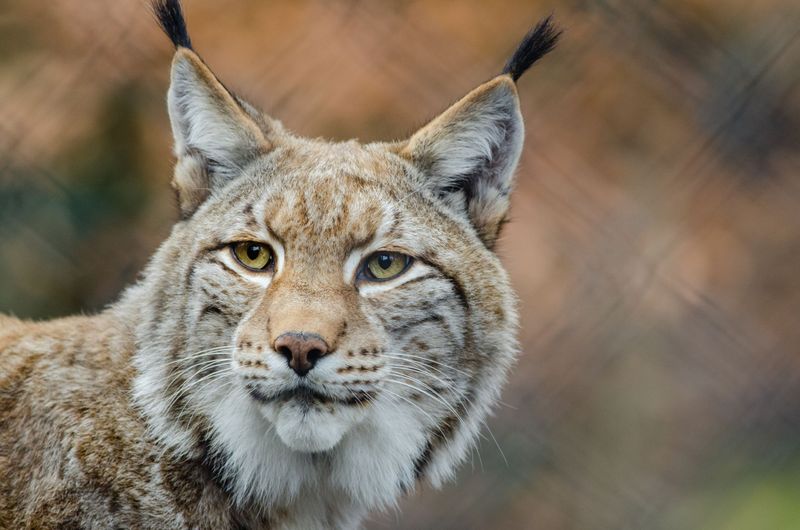
Those iconic black tufts atop a lynx’s ears aren’t just for show; they serve a vital purpose. Scientists believe these tufts aid in communication, helping lynx express emotions and intentions to one another. Additionally, they may enhance hearing by funneling sound into the ears. The lynx’s ears are highly sensitive, picking up the faintest rustle of leaves or the scamper of a distant prey. Have you ever spotted the distinctive silhouette of a lynx’s tufted ears in the wild? These features make them instantly recognizable and utterly fascinating.
Night Vision Mastery
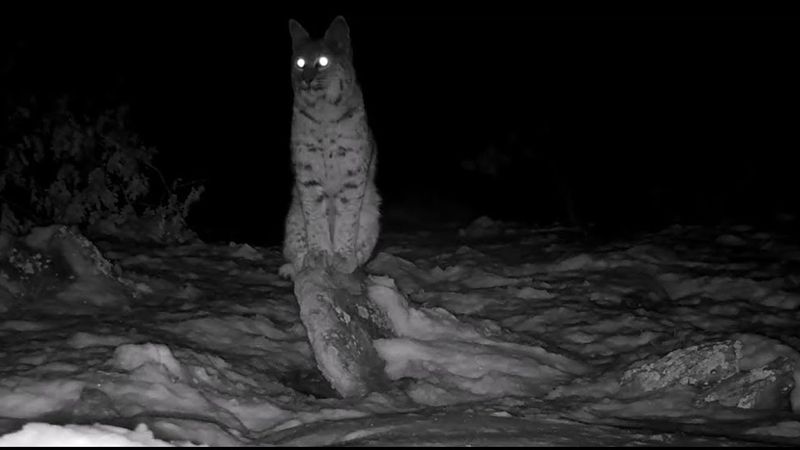
Lynx are equipped with exceptional night vision, a necessity for their nocturnal lifestyle. Their large, reflective eyes catch even the dimmest light, allowing them to hunt effectively in the dark. This adaptation is particularly advantageous in the long, dark winters of their northern habitats. How do lynx see so well in the dark? The answer lies in the tapetum lucidum, a layer behind the retina that reflects light back through the eye. This feature not only aids in night hunting but also gives them their characteristic eye glow.
Solitary Wanderers
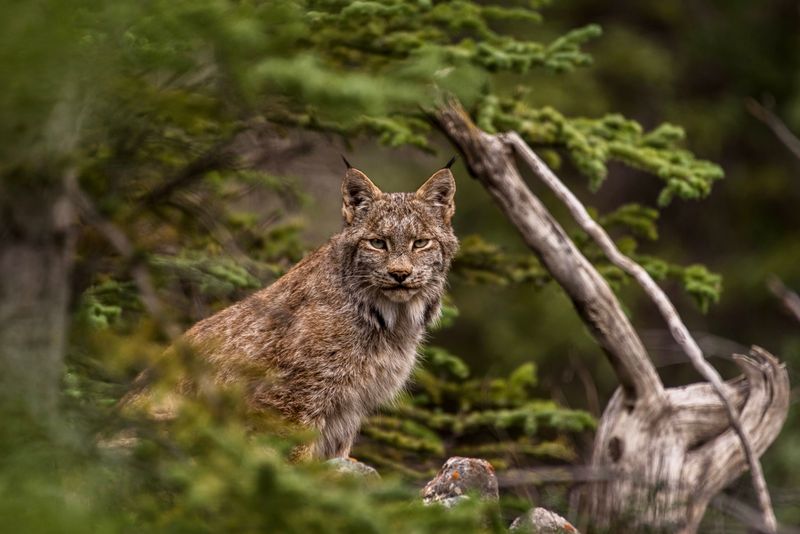
A lynx’s life is largely a solitary one, with these enigmatic cats preferring to roam alone across vast territories. This solitary nature reduces competition for resources and allows them to hunt without interference. Have you ever considered why lynx are rarely seen in groups? Their independence is key to their survival, particularly in harsh, resource-scarce environments. This solitary lifestyle also means they are incredibly self-reliant, mastering the art of survival through keen instincts and adaptability, truly embodying the spirit of the wild.
Short Tails, Big Purpose
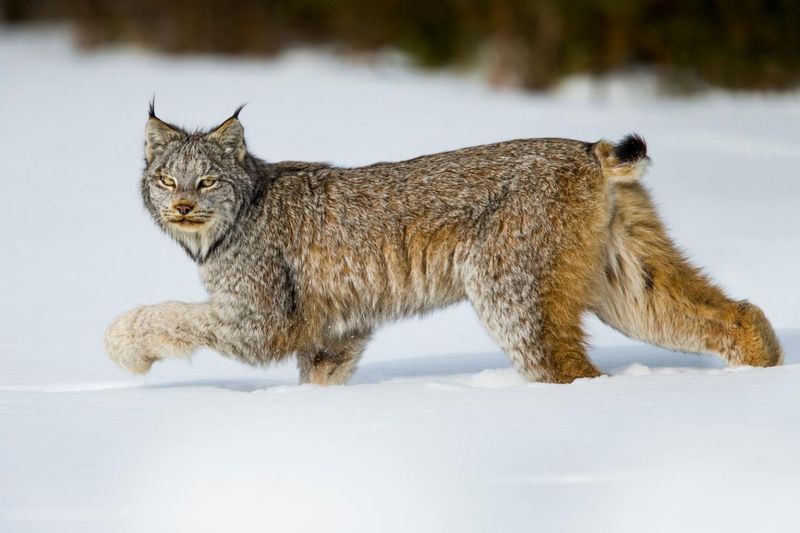
The lynx’s short tail is distinctive, ending in a black tip that serves multiple purposes. This stubby tail aids in balance—a crucial trait for an agile predator navigating the rugged terrains of its habitat. Have you ever noticed the contrast of its tail against the snowy backdrop? The black tip may also play a role in communication, acting as a visual cue to other lynxes. This seemingly simple appendage is a multifaceted tool, essential for both survival and interaction within their natural world, an understated yet crucial feature of the lynx’s anatomy.
Keen Hearing
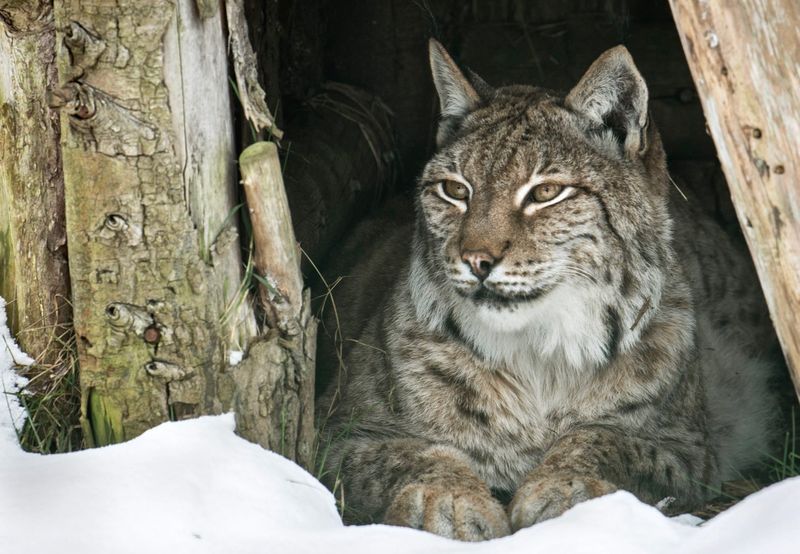
A lynx’s hearing is among its most vital senses, allowing it to detect prey from great distances. Its ears, capable of rotating independently, can pick up a wide range of sounds. Have you ever wondered why a lynx’s ears are so prominent? This distinctive feature is key to their hunting prowess. The ability to hear a mouse under thick snow or a bird in flight is a testament to their auditory acumen. This extraordinary hearing not only aids in hunting but also in avoiding potential threats, making it an essential survival skill.
Camouflage Coats
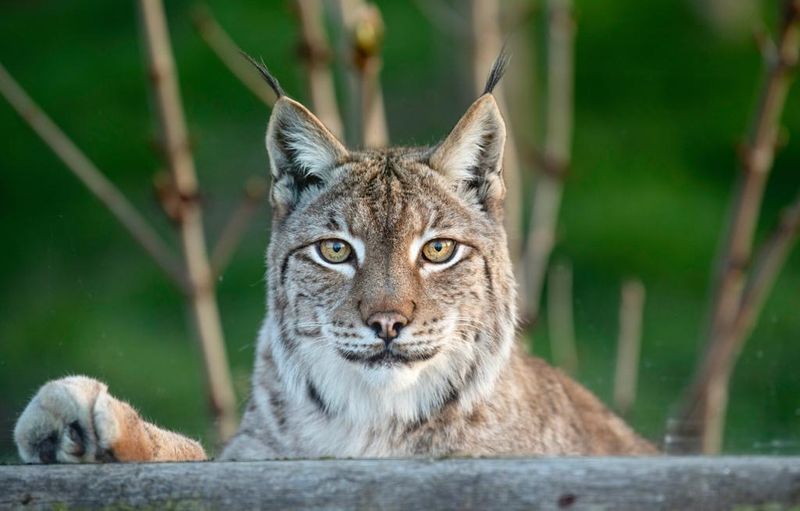
The lynx boasts a coat that changes with the seasons, providing excellent camouflage in both snowy winters and lush summers. This adaptive fur helps them blend seamlessly into their environments, a crucial factor in their hunting success. Ever marvelled at how they seem to disappear into the forest? Their coats range from silvery-grey in winter to a more reddish-brown in summer, adorned with spots that mimic dappled sunlight. This ability to remain unseen is not just fascinating; it’s a critical survival mechanism, allowing them to approach prey undetected.
Territorial Markers
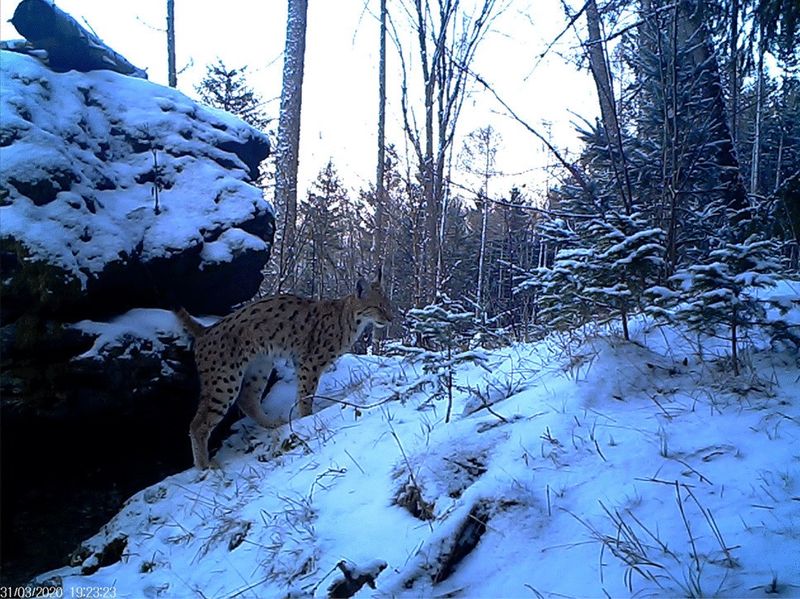
Lynx are territorial animals, frequently marking their domains with scent to ward off intruders. This behavior ensures that food resources are not depleted by rivals. Ever noticed how a lynx rubs against trees or bushes? This action deposits scent from glands located near their mouths and faces. These scent markers serve as invisible boundaries, communicating occupancy and dominance to other lynx. These territorial behaviors are essential for maintaining balance within their ecosystems, preventing overpopulation and ensuring each individual has enough resources to thrive.
Powerful Claws
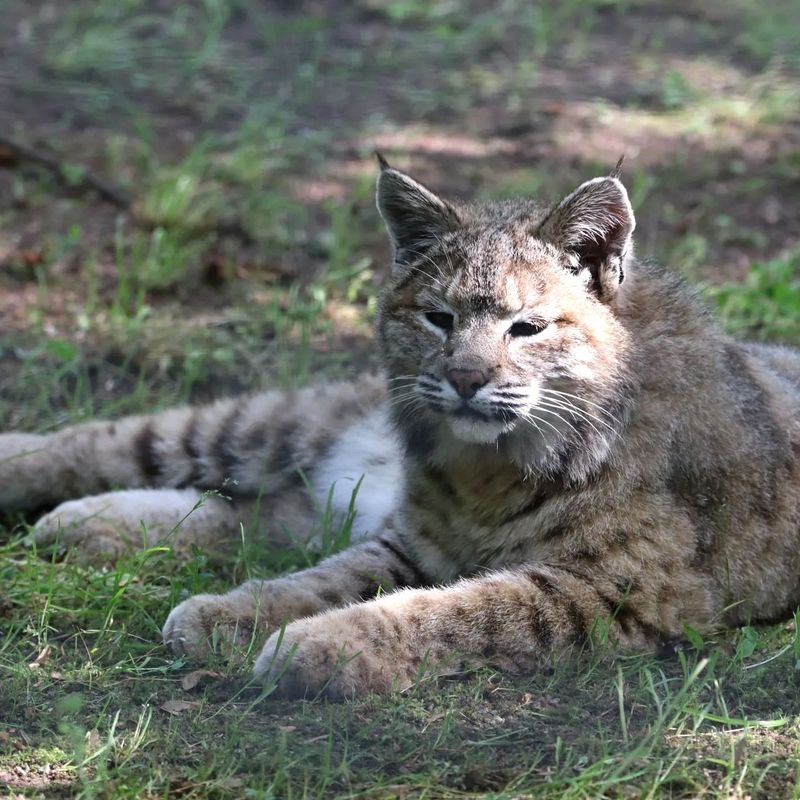
The lynx’s claws are formidable tools, retractable and sharp, designed for gripping prey and climbing trees. These claws play a crucial role in their hunting success, allowing them to seize and hold onto their quarry effectively. Have you ever observed a lynx’s paw up close? Their claws are not only weapons but also aids in climbing, enabling them to escape threats or pursue prey into the trees. This dual functionality of their claws highlights their adaptability, making them efficient predators and agile navigators of their woodland homes.
Varied Diet
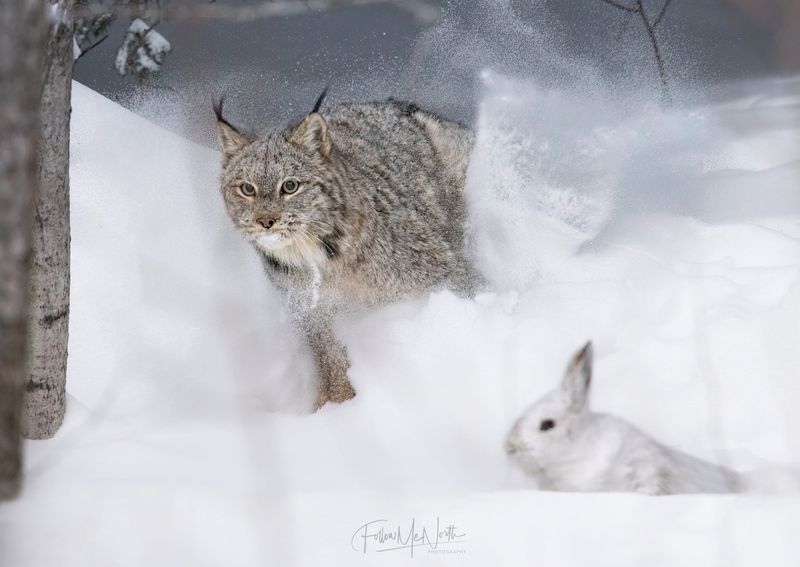
Lynx are opportunistic hunters, with a diet primarily consisting of small to medium-sized mammals and birds. Their preferred prey includes snowshoe hares, but they are adaptable and will pursue other animals when necessary. How does such a specialized predator maintain its dietary needs? By being flexible and resourceful, lynx can survive in a variety of environments. This adaptability is crucial for their survival, especially in regions where prey availability fluctuates seasonally. Their varied diet not only sustains them but also impacts the ecological balance of their habitats.
Lifespan and Reproduction
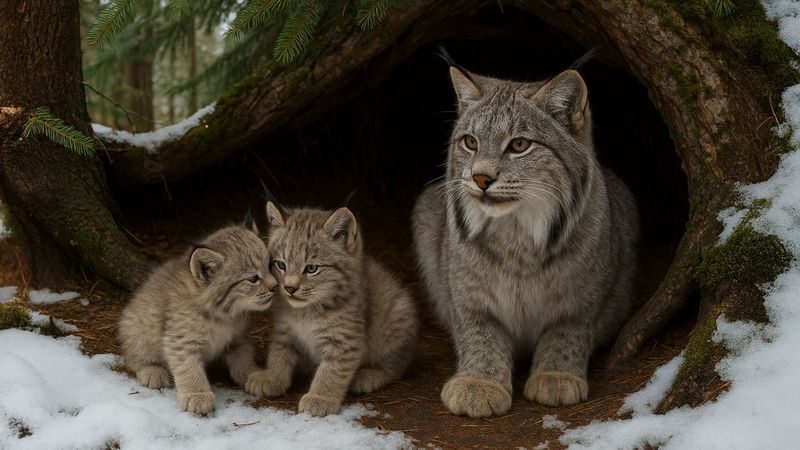
The life of a lynx begins with a litter of one to four cubs, born in secluded dens. These young depend on their mothers for the first few months, learning essential survival skills. Have you ever seen a lynx cub in the wild? Their playful antics are not just endearing; they’re critical for development. The average lifespan of a lynx in the wild is about 15 years, during which they may raise multiple generations. Understanding their reproductive strategies offers insight into how they maintain healthy populations across their range.
Winter Warriors
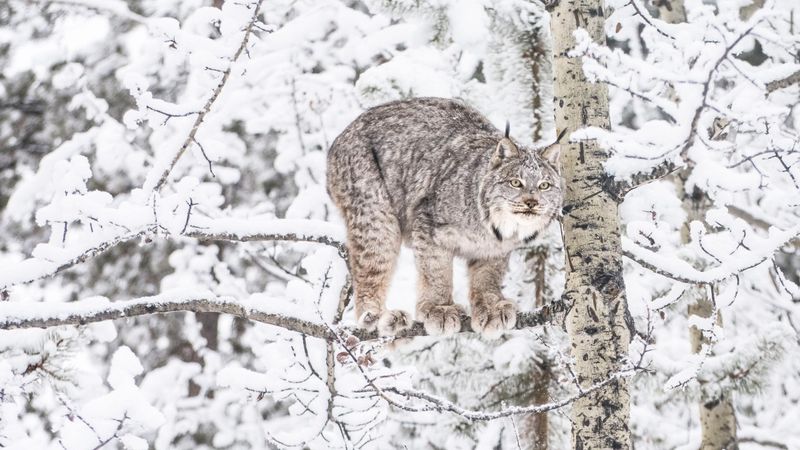
Lynx are true winter warriors, perfectly adapted to harsh, snowy climates. Their thick fur and snowshoe-like paws allow them to thrive in the cold, where other predators might struggle. Have you ever considered how lynx navigate deep snow with ease? Their wide paws prevent them from sinking, while their dense fur offers insulation. This resilience enables them to hunt efficiently during winter, maintaining their status as top predators. Their ability to endure and flourish in severe conditions underscores their remarkable adaptability and tenacity.
Mysterious Communication

Despite their solitary nature, lynx have a rich repertoire of vocalizations and body language for communication. These include yowls, growls, and purrs, which convey different messages. Have you ever heard the eerie call of a lynx at night? This vocal ability is key to mating and territorial interactions. In addition to sounds, lynx use visual signals, like their tail movements and ear positions, to express emotions or warnings. This complex communication system is essential for navigating their solitary lives, ensuring they can contact others when necessary.

